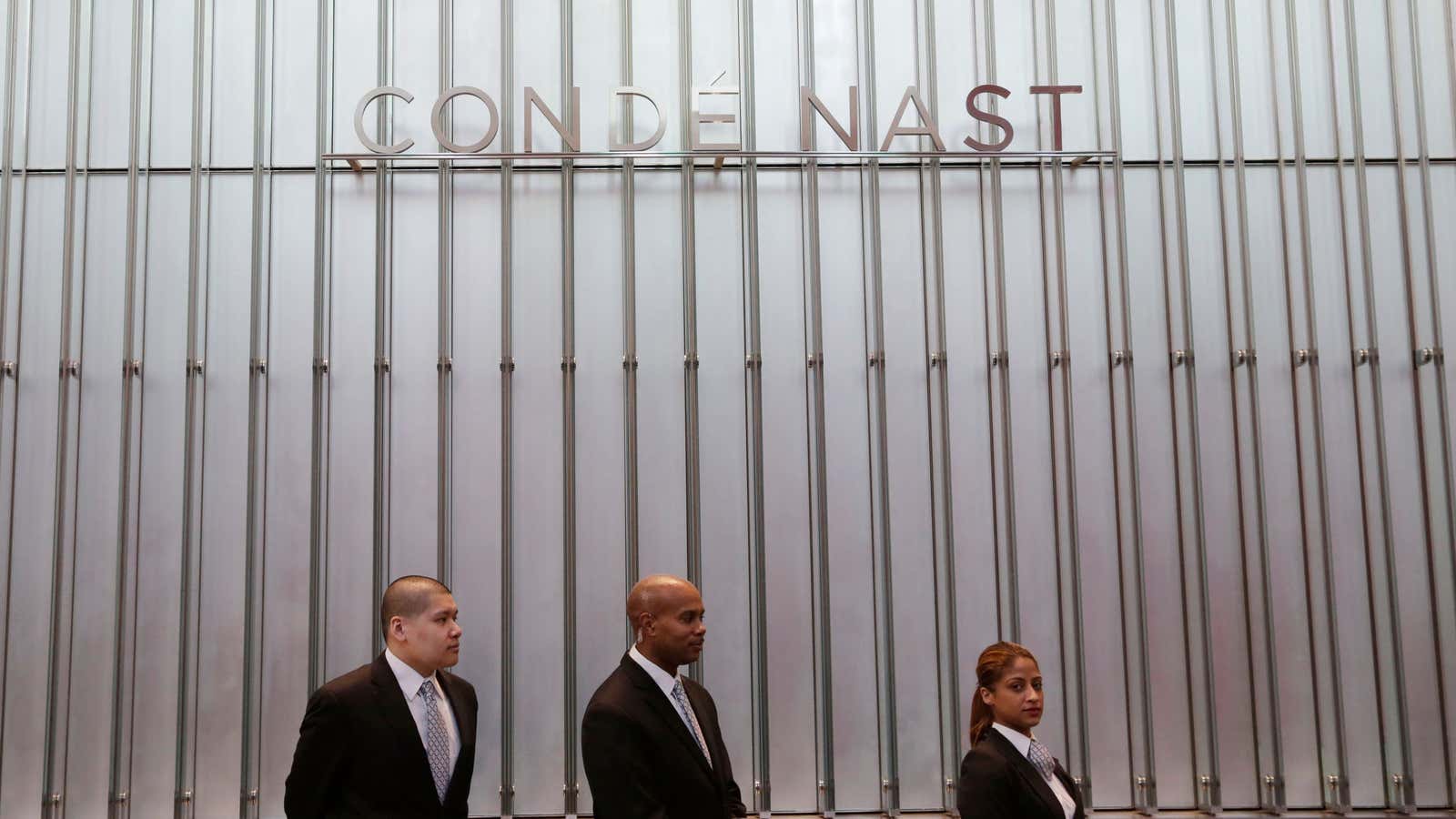Legislation ordering UK companies above a certain size to release their pay and gender data has confirmed pay disparities across a range of industries. Almost 80% of reporting employers found that their male employees earn more than their female co-workers do.
That was even the case in some surprising instances. The magazine publishing powerhouse Condé Nast, whose titles include Vogue, GQ, Vanity Fair, and Wired, employs three times as many women as men. Yet women at Conde Nast earn on average less than two-thirds of their male colleagues’ salaries, according to an analysis of the figures by the Press Gazette, a UK media trade publication.
Condé Nast is hardly alone among UK media companies, 91% of which pay men more than women on average. But the disparity at Condé Nast Britain is striking given just how many women the company employs at every level—584 women, versus 203 men, to be exact. Female employees are a majority in every pay quartile at the company.
“Across three-quarters of the business, there is no evidence of an appreciable gender pay gap,” Condé Nast Britain executives Sabine Vandenbroucke, the division’s chief operating officer, and Hazel McIntyre, its human resources director, said in a statement. “The report does reflect a gender pay gap in the top quartile which is influenced by a senior leadership team, many of long standing at the company.”
A full 63% of the employees in the company’s top earning quartile are women, which means the salaries of that male 37% are so high as to skew the rest of the company’s figures, as Buzzfeed digital reporter Mark Di Stefano pointed out in a tweet:
Overall, the mean hourly wage for women at the company is 37% below what the men earn. The median hourly rate for women is 23% below that of their male counterparts.
As the Condé Nast publication Wired noted, a disproportionate number of men in an organization’s leadership signals weaknesses in the company’s recruiting and promoting process that could ultimately hurt its effectiveness. If Condé Nast is serious about rectifying the gender pay gap in its company, here are some useful resources from their very own pages.
Gender Pay Gap Law: Know Your Rights (Vogue UK, Jan. 31, 2018)
The Big Salary Reveal: 12 Real People Discover What the Pay Gap Looks Like (Glamour.com, Feb. 7, 2017)
Where Women Are Winning Around the World (Conde Nast Traveler, April 2, 2018)
The Gender Pay Gap Data Is Useful but it’s Just the First Step (Wired UK, April 5, 2018)
This story is part of How We’ll Win, a project exploring the fight for gender equality at work. Read more stories here.
